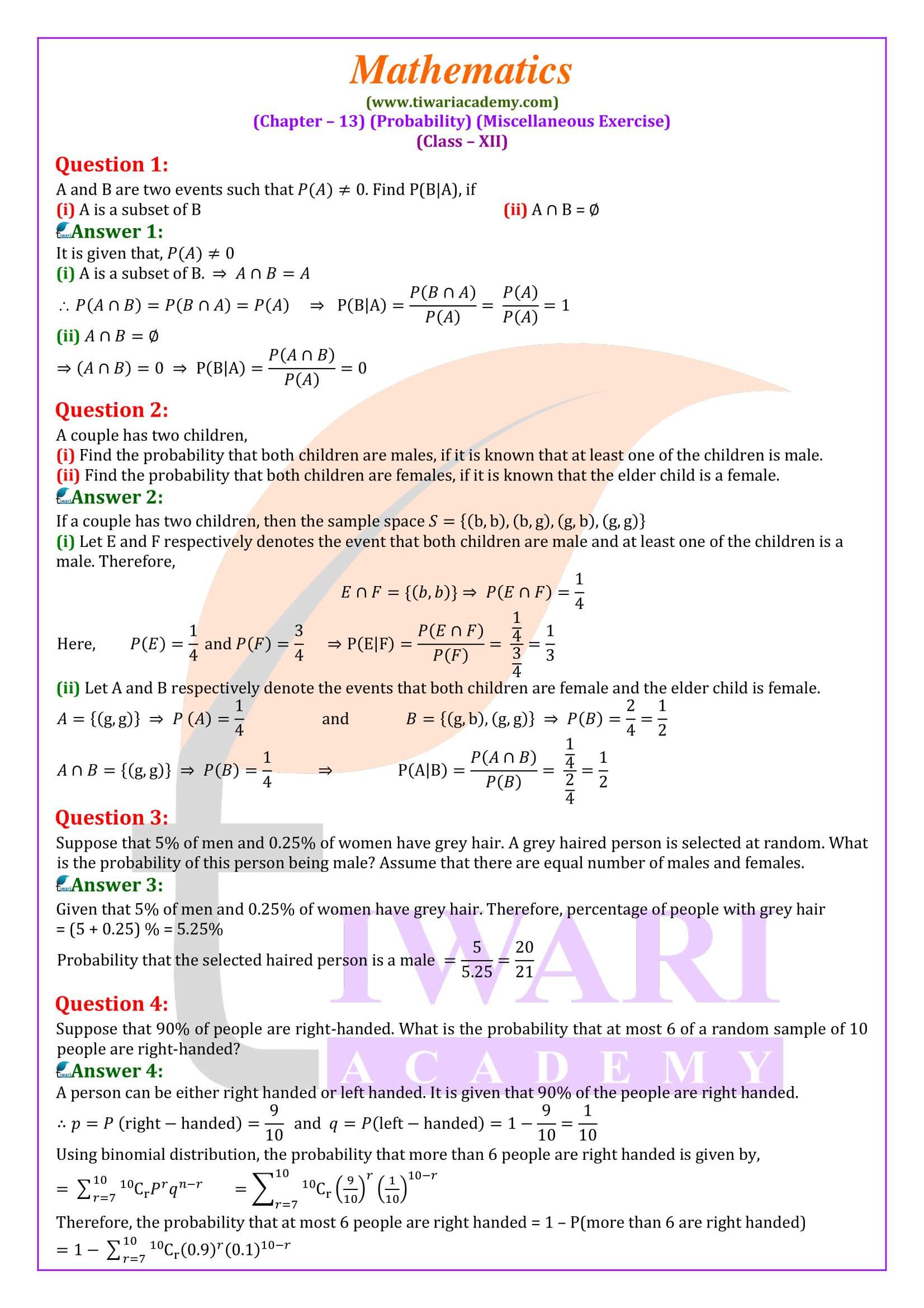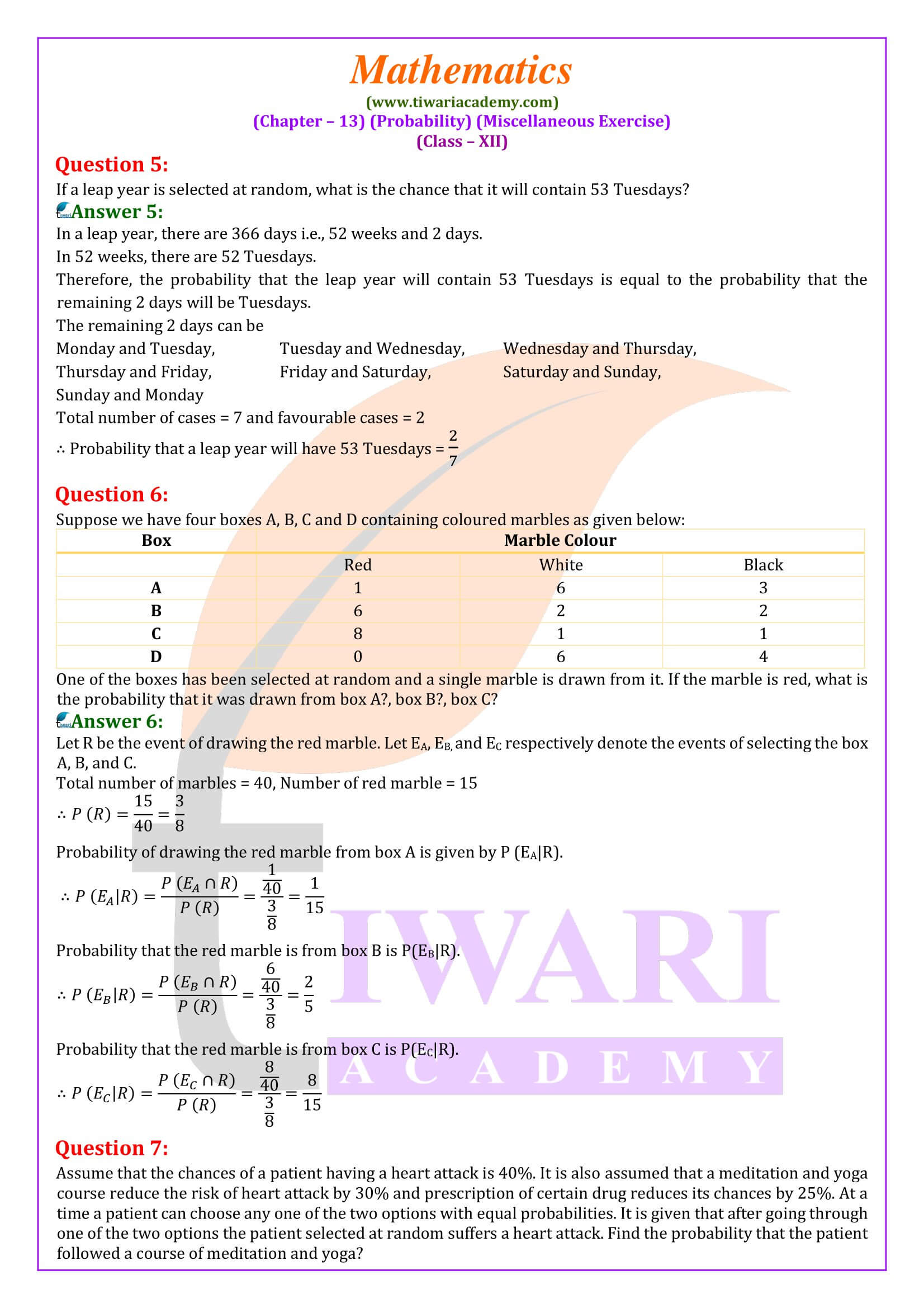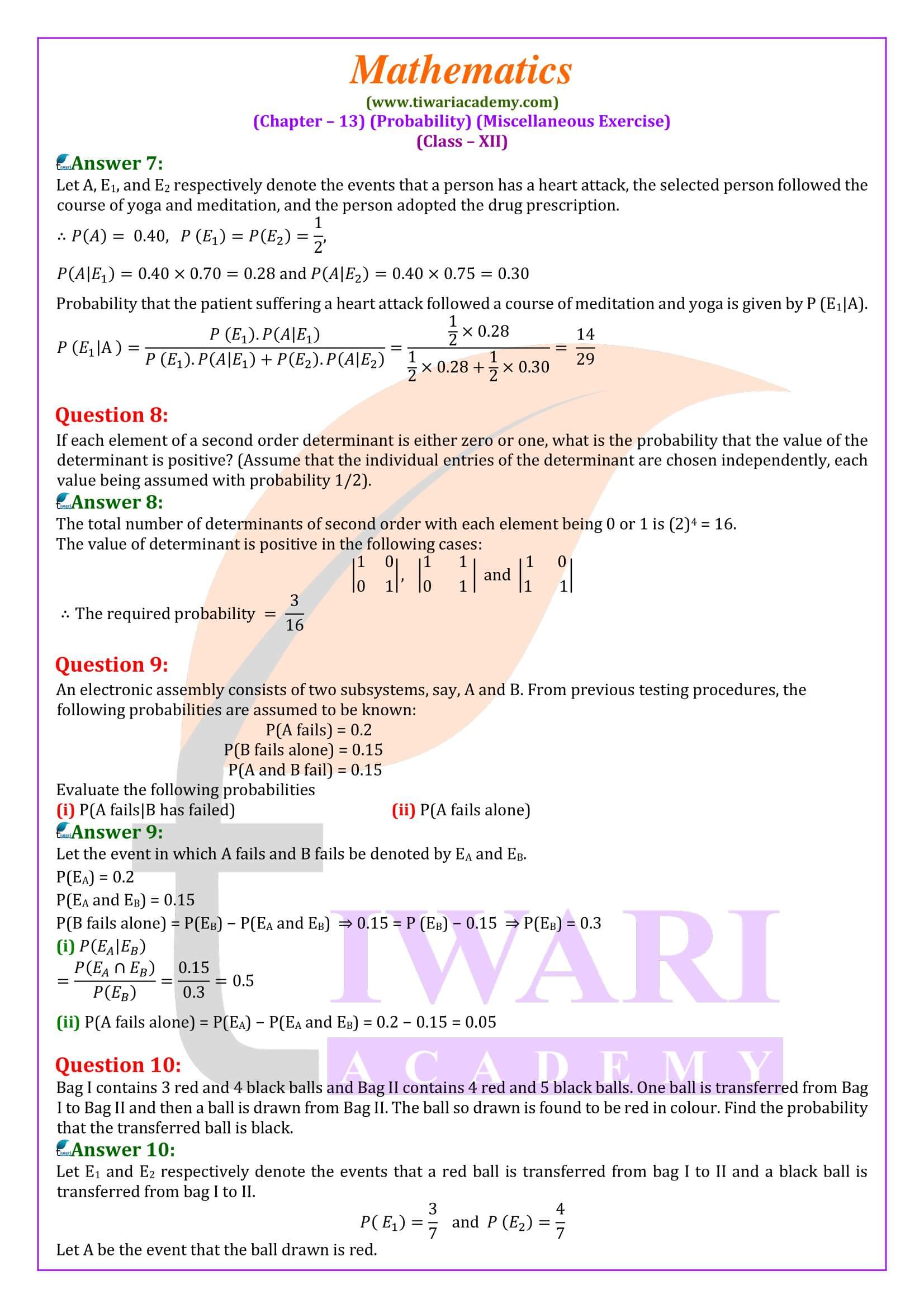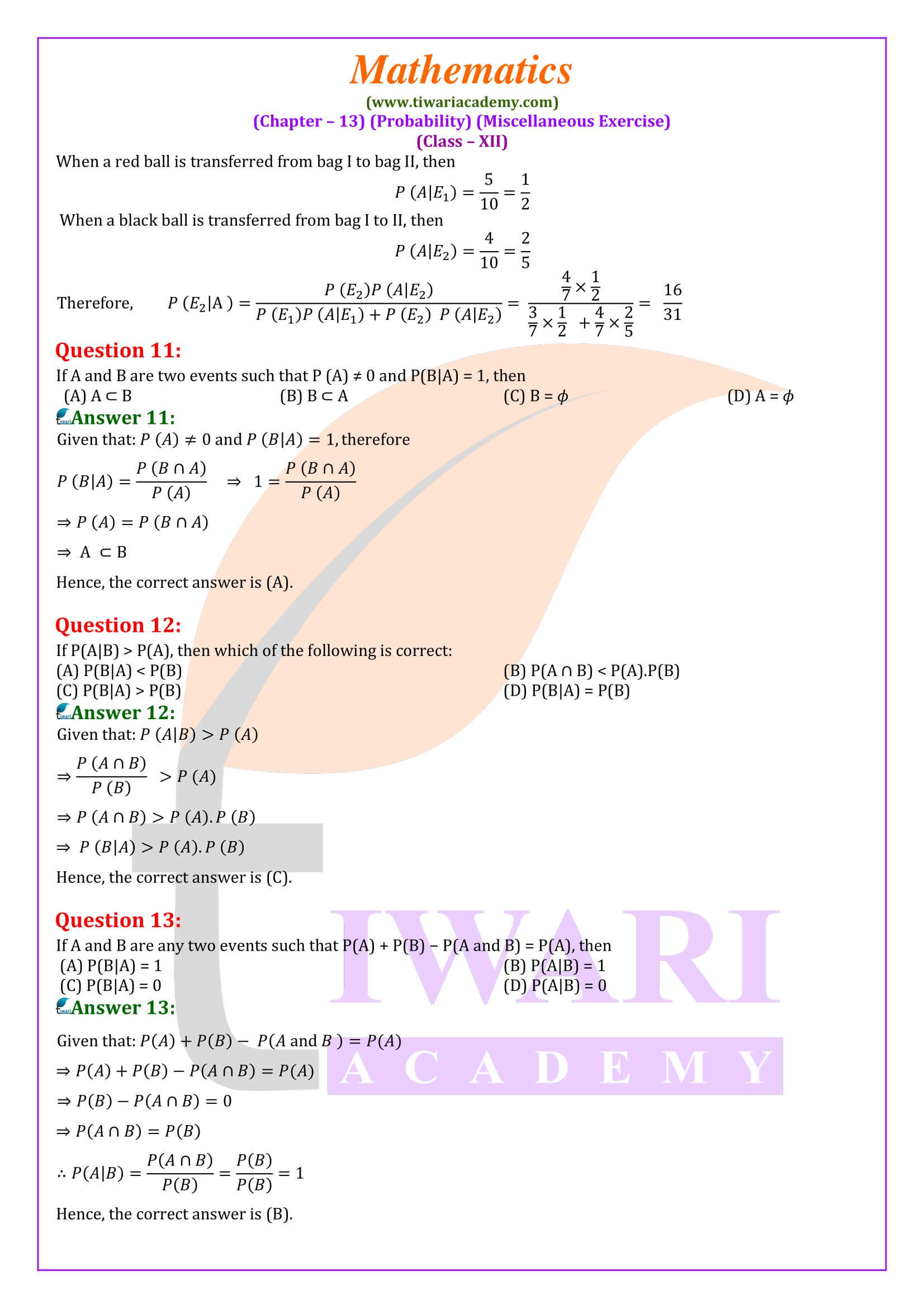NCERT Solutions for Class 12 Maths Chapter 13 Miscellaneous Exercise in Hindi and English Medium updated for academic session 2024-25. Questions of 12th Maths misc. ex. 13 are revised according to new NCERT textbooks issued for CBSE 2024-25 exams.
12th Maths Chapter 13 Miscellaneous Exercise in Hindi and English
Class 12 Maths Chapter 13 Miscellaneous Exercise Solutions
| Class: 12 | Mathematics |
| Chapter: 13 | Miscellaneous Exercise |
| Chapter Name: | Probability |
| Content Type: | Text and Videos Format |
| Session: | CBSE 2024-25 |
| Medium: | Hindi and English Medium |
Class 12 Maths Chapter 13 Miscellaneous Exercise 13 in Videos
Random Variables and its Probability Distributions
In most of these experiments, we were not only interested in the particular outcome that occurs, but in the number related to those results, as shown in the following examples / experiments:
- When turning two dice, we can take interest in the sum of numbers on two dice.
- In the experiment of randomly drawing four items (one after the other) from a batch of 20 items in which 6 are defective, we want to know the number of defects in a sample of four and not in particular order. Defective and non-defective items.
- On tossing a coin 50 times, we can get the number of titles received.
In all the above experiments, we have a rule that tells each experiment only a real number. This single real number may vary depending on the different results of the experiment. Therefore, it is a variable. In addition, its value depends on the result of a random experiment and is therefore called a random variable. A random variable is usually represented by x.
If you remember the definition of a function, you will realize that the random variable X is actually referring to a function whose domain is the result set (or sample space) of the random experiment. A random variable can take any real value, therefore, its co-domain is a group of real numbers. Therefore, a random variable can be defined as:
A random variable is a real-valued function whose domain is the sample space of a random experiment. For example, consider the use of tossing the coin twice in a row. The sample space for the experiment is S = {HH, HT, TH, TT}. If X represents the number of heads obtained, then X is a random variable and for each result, its value is X (HH) = 2, X (HT) = 1, X (TH) = 1, X (TT) = 0.






